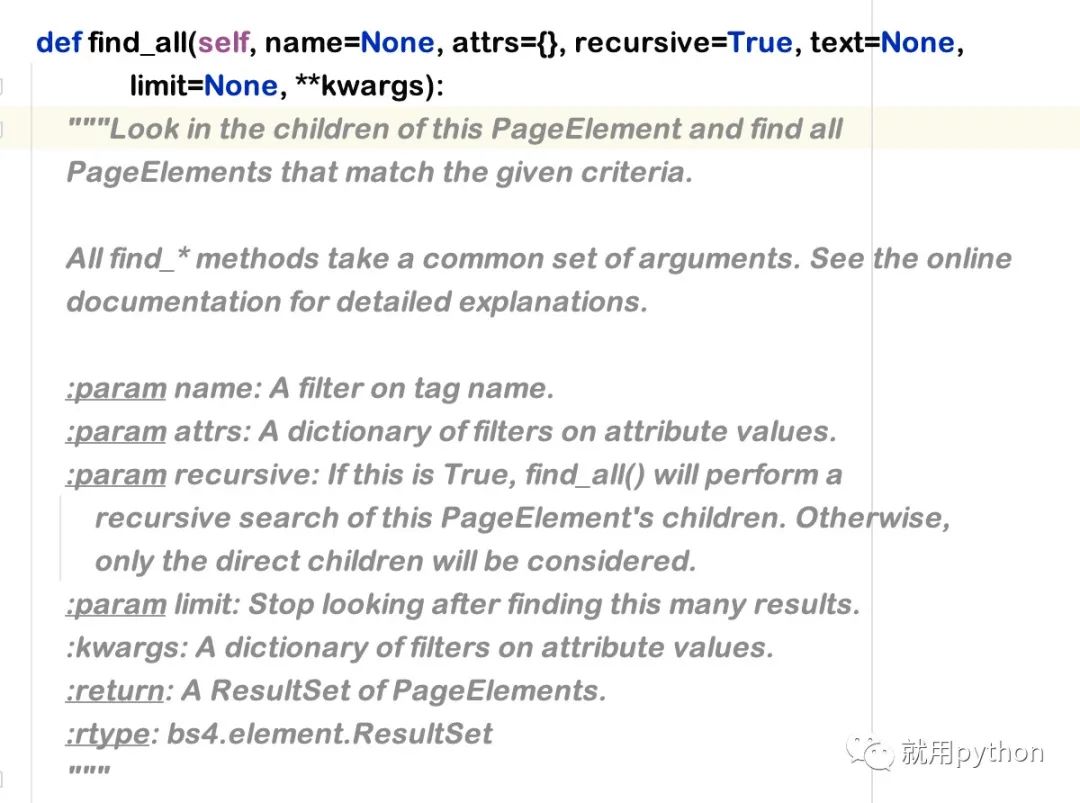python异常捕获及标签过滤 python爬虫之异常捕获及标签过滤详解
一名小测试 人气:0想了解python爬虫之异常捕获及标签过滤详解的相关内容吗,一名小测试在本文为您仔细讲解python异常捕获及标签过滤的相关知识和一些Code实例,欢迎阅读和指正,我们先划重点:python异常捕获,python标签过滤,下面大家一起来学习吧。
增加异常捕获,更容易现问题的解决方向
import ssl
import urllib.request
from bs4 import BeautifulSoup
from urllib.error import HTTPError, URLError
def get_data(url):
headers = {"user-agent":
"Mozilla/5.0 (Macintosh; Intel Mac OS X 10_15_7) AppleWebKit/537.36 (KHTML, like Gecko) Chrome/90.0.4430.93 Safari/537.36"
}
ssl._create_default_https_context = ssl._create_unverified_context
"""
urlopen处增加两个异常捕获:
1、如果页面出现错误或者服务器不存在时,会抛HTTP错误代码
2、如果url写错了或者是链接打不开时,会抛URLError错误
"""
try:
url_obj = urllib.request.Request(url, headers=headers)
response = urllib.request.urlopen(url_obj)
html = response.read().decode('utf8')
except (HTTPError, URLError)as e:
raise e
"""
BeautifulSoup处增加异常捕获是因为BeautifulSoup对象中有时候标签实际不存在时,会返回None值;
因为不知道,所以调用了就会导致抛出AttributeError: 'NoneType' object has no xxxxxxx。
"""
try:
bs = BeautifulSoup(html, "html.parser")
results = bs.body
except AttributeError as e:
return None
return results
if __name__ == '__main__':
print(get_data("https://movie.douban.com/chart"))
解析html,更好的实现数据展示效果
- get_text():获取文本信息
# 此处代码同上面打开url代码一致,故此处省略......
html = response.read().decode('utf8')
bs = BeautifulSoup(html, "html.parser")
data = bs.find('span', {'class': 'pl'})
print(f'电影评价数:{data}')
print(f'电影评价数:{data.get_text()}')
运行后的结果显示如下:
电影评价数:<span class="pl">(38054人评价)</span> 电影评价数:(38054人评价)
- find() 方法是过滤HTML标签,查找需要的单个标签

实际find方法封装是调用了正则find_all方法,把find_all中的limt参数传1,获取单个标签
1.name:可直接理解为标签元素
2.attrs:字典格式,放属性和属性值 {"class": "indent"}
3.recursive:递归参数,布尔值,为真时递归查询子标签
4.text:标签的文本内容匹配 , 是标签的文本,标签的文本
- find_all() 方法是过滤HTML标签,查找需要的标签组
使用方法适合find一样的,无非就是多了个limit参数(筛选数据)

必须注意的小知识点:
# 下面两种写法,实际是一样的功能,都是查询id为text的属性值
bs.find_all(id="text")
bs.find_all(' ', {"id": "text"})
# 如果是class的就不能class="x x x"了,因为class是python中类的关键字
bs.find_all(class_="text")
bs.find_all(' ', {"class": "text"})
加载全部内容